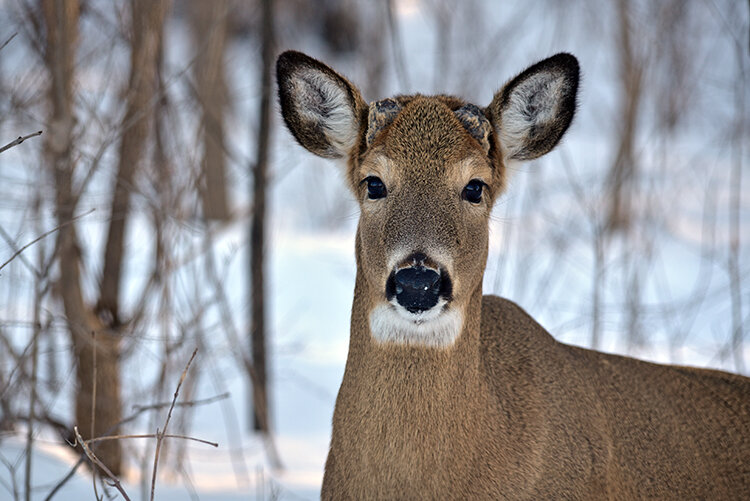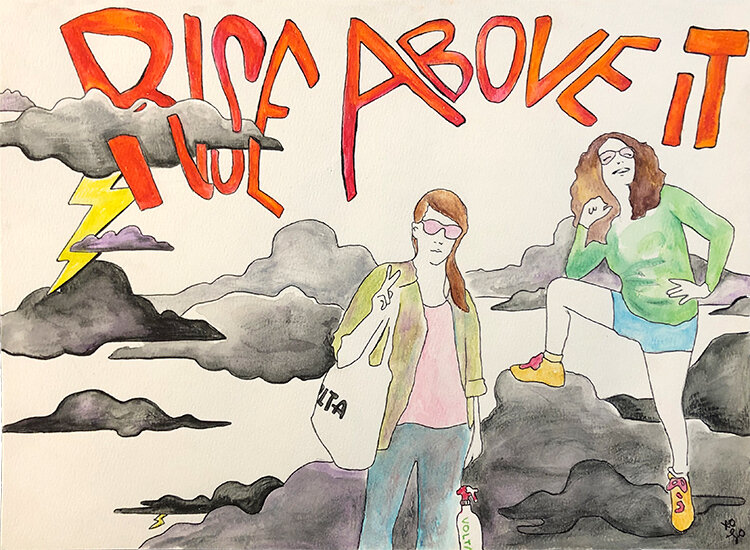You had to leave the city to hunt deer when Brad Gates, a wildlife biologist, conservationist and Philadelphia hunter, was growing up in Upper Roxborough in the 1970s.
“You got in your car, drove three or four hours to the Poconos, to Tioga County,” he recalls.
Closer to home, Gates roamed the woods of the Schuylkill Center for Environmental Education and the Upper Roxborough Reservoir, catching frogs, toads and snakes.
Today a kid like Gates roaming Philadelphia’s forests will run into white-tailed deer or signs of them (scat, trails or antler-rubbed trees) regularly, but 40 years ago deer were more scarce.
“If someone saw a deer, everyone would call everybody, and everyone would try to get a look,” Gates recounts.

By the 1980s, teenage Gates was seeing more deer. He and some like-minded friends researched the rules about hunting in Philadelphia and realized that although firearms were prohibited, hunting was otherwise generally allowed on private property. “We started bowhunting along the Schuylkill River on Port Royal Avenue. Then, as the deer population grew, and our knowledge of hunting grew, we got more organized.”
The increasingly abundant deer were becoming a nuisance. By the mid-1990s, 129 deer per acre lived in Pennypack Park, although the land could only sustainably support 8-10 deer per acre. Large numbers of deer over-browsed the forest understory in parks, preventing seedlings from growing into trees and, as a side effect, clearing out the competition for invasive plant species that they don’t eat, such as garlic mustard and Japanese stilt grass.
Philadelphia Parks and Recreation, which has not allowed recreational hunting, has dealt with the deer overpopulation by bringing in professional sharp-shooters to cull the deer and donating the venision to local anti-hunger programs.
The John Heinz National Wildlife Refuge has similarly culled deer while prohibiting recreational hunting, according to refuge manager Lamar Gore.
“When I first got to the refuge about five years ago, I started getting phone calls right away, people asking if we allowed hunting,” says Gore, who soon saw an opportunity to involve the public. “I can’t justify bringing sharpshooters in if we’re not giving an opportunity to hunters who want to hunt their own meat.” Planning and community outreach followed, culminating in what was the refuge’s first public deer hunt in the fall of 2019.
Hunting demographics do not mirror Philadelphia’s population. A 2016 survey by the U.S. Fish and Wildlife Survey (USFWS) found that 97 percent of hunters are white.
“I think in the conservation and management world, we’ve done ourselves a disservice, whether intentionally or unintentionally, leaving out a whole generation of people,” says Gore. Offering a hunting program in a diverse city is one step in the right direction.
The same USFWS survey found that hunting is declining in popularity, with 11.5 million American hunters over 16 years of age, down from 12.5 million in 2006. Since hunting license fees fund land conservation directly and taxes on hunting fund conservation indirectly, Gore also points to the need to promote hunting among urbanites for conservation purposes.
Jamie Coyle had been thinking about hunting when he discovered the new program on the refuge’s website. Coyle works for the Coyote Tracks Youth Program of Four Elements Earth Education, a program that connects kids to nature.
Hunting appealed to Coyle as a way to control the “outrageous deer population,” he says, as well as, “getting food that’s sustainable and local. And venison is delicious.” He signed up, taking part in the refuge’s training that combined education in deer biology and hunting rules with crossbrow practice.
Overall the group bagged 12 deer. In three outings Coyle did not manage to shoot any himself, but counts the experience as a win.
“It was super pleasant to be out in the woods watching birds and squirrels running around,” he says.
Gore and Gates both also emphasized the joys of spending quiet time outdoors while hunting.
Over the years Gates’ hunting has evolved into a serious hobby. When we spoke in November he had just returned from a hunting trip to Kansas. Back in Philadelphia Gates tries to do his part to keep the deer population in check by targeting does. He estimates he kills about 10 per year (keeping some of the venison and sharing the rest with food-insecure families).
“It’s my way to decompress,” he says. “My way of watching the wildlife, the hawks and the deer.”





